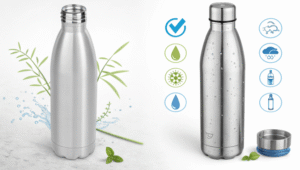Choosing the right mug material feels daunting. A poor choice can ruin the coffee experience and damage your brand's reputation with a cheap-feeling product.
Ceramic mugs excel at retaining heat, keeping drinks warmer for longer. They are also inert, meaning they won't alter the taste of your beverage, and offer endless design possibilities for branding.
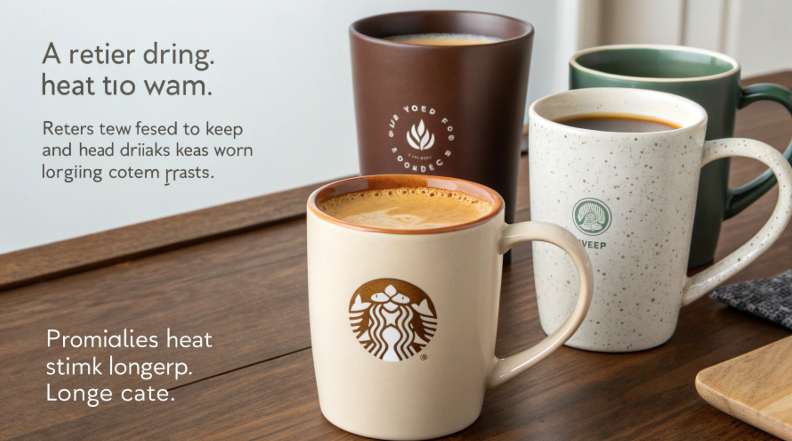
There's a reason ceramic has been the go-to material for mugs for centuries. It just feels right. As someone who helps brands develop drinkware, I've handled thousands of mugs made from every material imaginable. Yet, I always come back to the simple satisfaction of a well-made ceramic mug. It has a reassuring weight and a smooth feel that other materials can't quite replicate. But beyond just the feeling, there are solid, practical reasons why ceramic is a superior choice for hot beverages. Let's explore those advantages.
What are the advantages of ceramic mugs?
Your new mug line needs to stand out. But if all mugs seem the same, it's hard to communicate real value to your customers beyond just the price.
The key advantages of ceramic are excellent heat retention, a neutral taste profile, a substantial feel that signals quality, and incredible versatility in shape, color, and printed designs for strong branding.
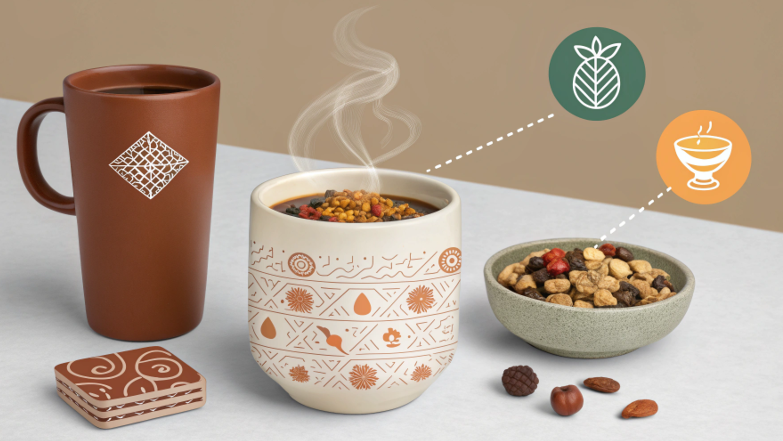
When a client wants to create a mug that feels classic and premium, I almost always steer them toward ceramic. It’s a canvas. You can do almost anything with it. We once developed a line of mugs with a unique reactive glaze, so no two were exactly alike. Customers loved the artistry. They weren't just buying a mug; they were buying a small piece of art. This is the power of ceramic. It allows you to build a story and an experience right into the product itself.
The Developer's View on Ceramic's Strengths
For a product developer like Emily, understanding these advantages helps in creating a product that not only looks good but performs exceptionally.
| Advantage | Technical Reason & Impact |
|---|---|
| Heat Retention | Ceramic is a poor conductor of heat. Its porous nature (even on a microscopic level) traps heat effectively, keeping coffee or tea warmer for much longer than glass or standard metal. |
| Taste Neutrality | Properly fired and glazed ceramic is an inert material. It does not leach any chemicals or flavors, ensuring the beverage tastes exactly as it should. There is no metallic tang. |
| Design & Branding | Ceramic is incredibly versatile. It can be molded into custom shapes, finished with countless glaze techniques (matte, glossy, reactive), and decorated with methods like decal printing or sublimation. |
| Perceived Quality | The natural weight and solid feel of a ceramic mug give it a sense of substance and value. It doesn't feel flimsy or disposable, which enhances the user's daily ritual. |
These qualities combine to create a superior user experience. Your customer isn't just drinking coffee; they are enjoying a small, comforting ritual, and the quality of the mug is a huge part of that.
Is a ceramic mug good for health?
You read alarming headlines about toxins in consumer goods. This can make you hesitate, wondering if the glaze on your ceramic mugs could pose a health risk to your customers.
Yes, a modern, high-quality ceramic mug is very good for health. The key is ensuring the glaze is certified lead-free and cadmium-free. Properly fired ceramic is inert and won't leach any harmful substances into your drink.
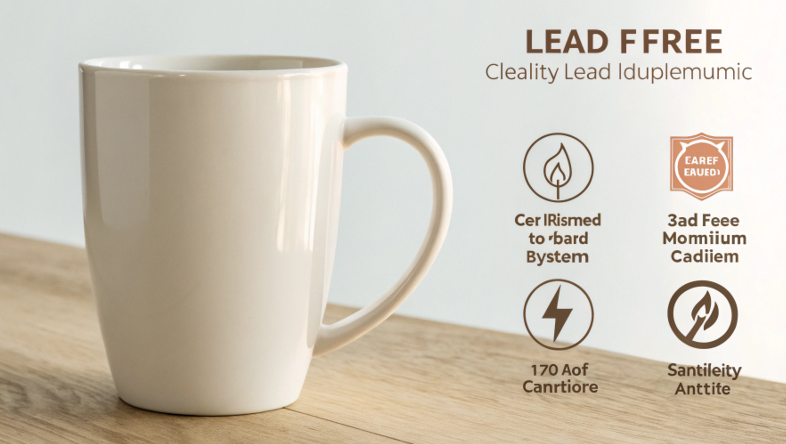
Safety is non-negotiable. I stress this in every meeting. A few years ago, a potential partner brought me some cheap mugs they had sourced elsewhere. They looked great, but they couldn't provide any safety documentation. I refused the project. Your brand's reputation is built on trust, and that trust begins with guaranteeing the safety of the product your customer puts their lips on every single day. Always demand the test reports for lead and cadmium. A reputable supplier will have them ready.
Sourcing Safe Ceramic: A Developer's Guide
For someone like Emily, "safe" is a technical specification, not just a marketing term. The health aspect of a ceramic mug comes down entirely to the quality of its glaze and the firing process.
- The Problem with Old Glazes: Historically, lead and cadmium were used in ceramic glazes to create bright, vibrant colors like red and yellow. If the mug was fired at too low a temperature, these toxins could potentially leach out, especially with acidic drinks like coffee or orange juice.
- The Modern Solution: Today, reputable manufacturers use lead-free and cadmium-free glazes. We have advanced formulations that can produce beautiful, stable colors without any toxic materials. The key is "vitrification"—firing the mug at a high temperature (typically over 2100°F or 1150°C) until the clay and glaze fuse together into a durable, non-porous, glass-like surface.
- Essential Certifications: When you are sourcing mugs, you must demand compliance documentation. In the US, this means passing FDA standards. For brands selling in California, the product must meet the stringent requirements of Proposition 65, which has very low tolerance levels for lead and cadmium. Don't just take a supplier's word for it; ask to see the lab test results.
What are the disadvantages of ceramic mugs?
You love the classic feel of ceramic, but you know it's not perfect. Ignoring its flaws could lead to customer complaints about chipping, breakage, or drinks getting cold too fast.
The main disadvantages of ceramic mugs are their fragility and weight. They can easily chip or break if dropped. Also, they do not insulate drinks nearly as well as vacuum-sealed tumblers, meaning they are not ideal for travel.
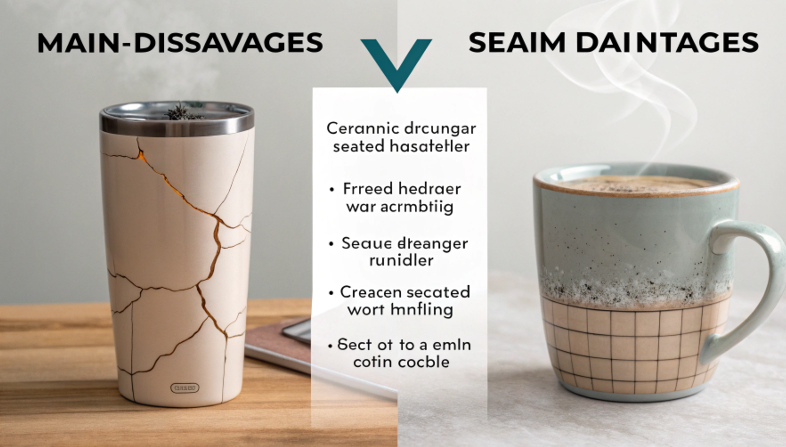
Every material involves a trade-off. I once worked with a brand that wanted to launch a ceramic travel mug. I advised against it strongly. While ceramic holds heat well on a desk, it's not an "insulator" for a commute. The lid would be an issue, and the risk of it breaking in a bag was too high. They listened, and we instead developed a beautiful line of desk mugs that became bestsellers. Understanding a material's weaknesses is just as important as knowing its strengths. It allows you to position the product correctly.
As a product developer, you must design and market your product with these limitations in mind to set the right customer expectations.
- Fragility: Ceramic is brittle. A short drop onto a hard floor will likely result in a chip or a complete break. You can mitigate this through design—thicker walls and sturdier, rounded rims are more resistant to chipping than thin, flat ones. However, you can't eliminate the risk entirely. It's not the right material for rugged, outdoor use.
- Poor Insulation for Travel: There's a key difference between heat retention and insulation. Ceramic's thickness helps it retain heat, slowing the cooling process. But it is not an insulator like the vacuum space in a double-walled steel tumbler. A ceramic mug will not keep a drink piping hot for hours during a commute. It's designed for stationery, short-term enjoyment.
- Weight: The satisfying heft of a ceramic mug can also be a disadvantage. It makes them heavier to ship, which increases costs. It also makes them less portable than a lightweight plastic or aluminum bottle. Their use case is firmly in the home or office.
What is the healthiest cup to drink from?
You're trying to choose the best material for your brand. With so many claims about safety, it's hard to cut through the noise and know which option is truly the healthiest for consumers.
Glass is the most inert and pure material, making it the technical champion for health. However, properly certified lead-free ceramic and high-grade 18/8 stainless steel are equally safe, non-toxic, and often more practical for daily use.

When a client asks me this, I tell them there isn't one single "best" answer for every person and every situation. "Healthy" must be balanced with "practical." While glass is the purest, its fragility makes it a poor choice for many lifestyles. The healthiest cup is the safe, reusable one that a person will actually use every day. Our goal is to provide a range of excellent, safe options so the customer can make the best choice for their personal routine.
A Health-Based Material Comparison
For a developer like Emily, choosing the right material is a balance of safety, function, and brand identity. Here's a direct comparison focused solely on health.
| Material | Health Advantage | Key Consideration |
|---|---|---|
| Glass | Completely inert. Zero taste or chemical leaching. | Can shatter, which poses a physical safety risk. |
| Ceramic | Inert and non-leaching if made with a modern glaze. | Must be certified lead-free and cadmium-free from a reputable supplier. |
| Stainless Steel | Very stable, durable, and non-reactive (18/8 grade). | A very small number of users can detect a slight metallic taste. |
| Plastic (Tritan) | Lightweight and shatterproof. Certified BPA-free. | Lower-quality plastics can absorb odors. Micro-scratches can form over time. |
Ultimately, for hot drinks enjoyed at home or in the office, a high-quality certified ceramic mug and a borosilicate glass cup are tied for the top spot. They offer purity of taste with zero risk of chemical interaction. For travel and durability, 18/8 stainless steel is the undisputed leader in health and safety.
Conclusion
Ceramic mugs offer a timeless blend of taste, feel, and design. Understanding their strengths in heat retention and health, while respecting their fragility, lets you create a product customers will cherish.


